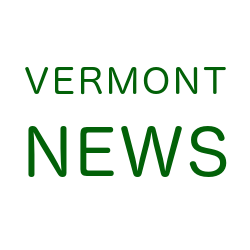As the coronavirus pandemic loomed, shuttering his employer, Generator, along with countless other Burlington businesses, Jake Blend had an idea. What if the Burlington makerspace, which was full of high-end tools, could do what small manufacturers around the country were doing: help out during the crisis by suppling healthcare organizations with the personal protection equipment, or PPE, they so desperately needed? As one of Generator’s resident industrial designers, he could fabricate and produce the equipment himself.
Using an open-source design he found online, Blend began work on a prototype face shield, the clear plastic covering healthcare workers wear to protect themselves from the COVID-19 virus, which also significantly extends the useable life of scarce N95 face masks.
Across town at the University of Vermont Medical Center, an anesthesia resident named Vivek Chittineni, who sat on the hospital’s PPE committee, was approaching the same problem from the opposite direction. What if UVMMC could bolster its stressed supply chain with PPE produced by local companies?
Blend and Chittineni were active in the same networks, but it took UVM’s Dan Harvey ’84 — director of operations in the Office of the Vice President for Research and assistant dean of the Graduate College, who was also president of Generator’s board — to bring them together.
Blend, who had quarantined himself for safety, contacted Harvey and Generator’s executive director, Meg Hammond, and asked to re-enter the facility. “He pulled this crazy all-nighter,” Harvey says, and produced the prototype.
At about the same time, Harvey was scanning an email chain from Burlington entrepreneur and UVM alumnus Steve Arms ’81 and spotted a reply from Chittineni, who was obviously knowledgeable and clearly well-connected at the hospital. Harvey gave him a call and told him about Blend’s prototype.
“Vivek literally drove to Generator that night, picked up the prototype from Jake and took it to the hospital,” Harvey says.
Over the course of the next few days, Chittineni and his colleagues tested the prototype shields and made modification suggestions, which Blend incorporated. When the prototype shield came before the hospital’s PPE committee, it got rave reviews.
As momentum gathered for what looked like a very large order, Hammond and Elliott Katz, Generator’s designer and operation manager, confronted a challenge they’d never anticipated: how to turn a community makerspace geared to producing prototypes in small volume for budding entrepreneurs into what amounted to a manufacturing and distribution facility. The key was sourcing materials and building a supply chain, the team realized.
“We knew by then that Jake could laser cut the clear plastic face shields pretty easily,” Harvey says. But what about the flexible plastic headband, which required 3D printing, and the elastic piece that connected the headband and kept the face shield in place? For the headbands, Hammond and Katz enlisted Beta Technologies and its fleet of 3D printers. Queen City Dry Goods agreed to supply the disposable elastic piece.
After jumping through the necessary hoops and being designated an approved UVMMC vendor, Generator began its new life on April 2 when a formal purchase order for 1,000 face shields landed in Harvey’s inbox. “It’s a day the Generator family will never forget,” says Harvey, who credits Generator’s board and staff for being supportive of the project.
Chittineni is thrilled — both with the face shields and the larger point the project has made. “I was hoping to prove to hospital administration that we have a massive group of talented, skilled designers and fabricators in our community who are able to make these things for us and help the medical establishment and the public in so many ways,” he says. “The Generator project proved that point and then some.”
Source: UVM News
